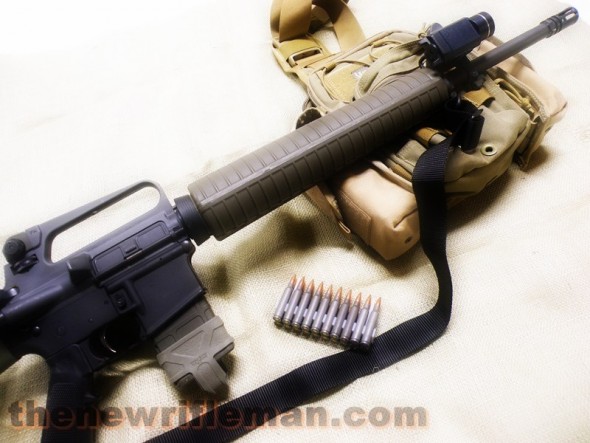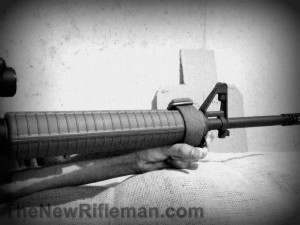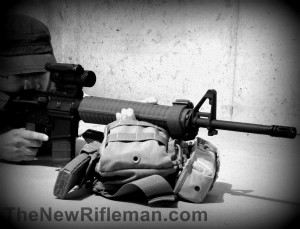The three basic shooting positions might not seem like they need a guide. What is there to explain? Well, there is always cheating.
Cheating with the three shooting positions:
Remember that cheating should be a primary part of your rifle shooting. We want to use every advantage to hit our target as quickly and efficiently as possible. If there is a barrier or cover available, use it to stabilize your shooting and give cover for your body. Free-standing in the open with bone support and all that meticulous body control is unnecessary… very skillful, but unnecessary. Lets look at a simple standing support I use first:
When standing near hard support I form my support hand into an L shape and press against a fixed barrier with the thumb supporting the rifle. It is quick and stable enough for some difficult shots. My first time at competition I used this for a 400 yard shot.
Kneeling can be quick all on its own but a barrier to support a kneeling shot is much superior to taking a knee. Sometimes when I use my A2 I grab the sling swivel and sling in a fist to rest my rifle on. The bottom of your fist is flat and the rifle can pivot on the fist comfortably. This is quick to set up and offers another options for stable shooting. The rifle in the example has a side sling mount so I did my best to represent this with that weapon.
Prone is very simple and very stable without use of a sling. I prefer throwing down my gear bag (a Maxpedition Remora) to stabilize a difficult shot. This bag goes with me everywhere and is ready to go in my closet for range use or for bumps in the night. It carries my mags, blowout kit, range necessities, shooting glasses, ear protection, ect. It also doubles as a shooting support.
When cheating isn’t cheating:
We need not worry about “cheating” as what we are really doing is focusing on strategies for ensuring our shot connects with the target as quickly as possible. These are just a few methods I have used… but there are endless variations. When you can practice at the range, practice getting into different supported positions with the benches, barriers, and structural supports that are present. Use what works for you. Maybe you think one of my techniques are stupid? That’s Ok! Whatever works best for you is the best for you. Can’t get much simpler than that.











